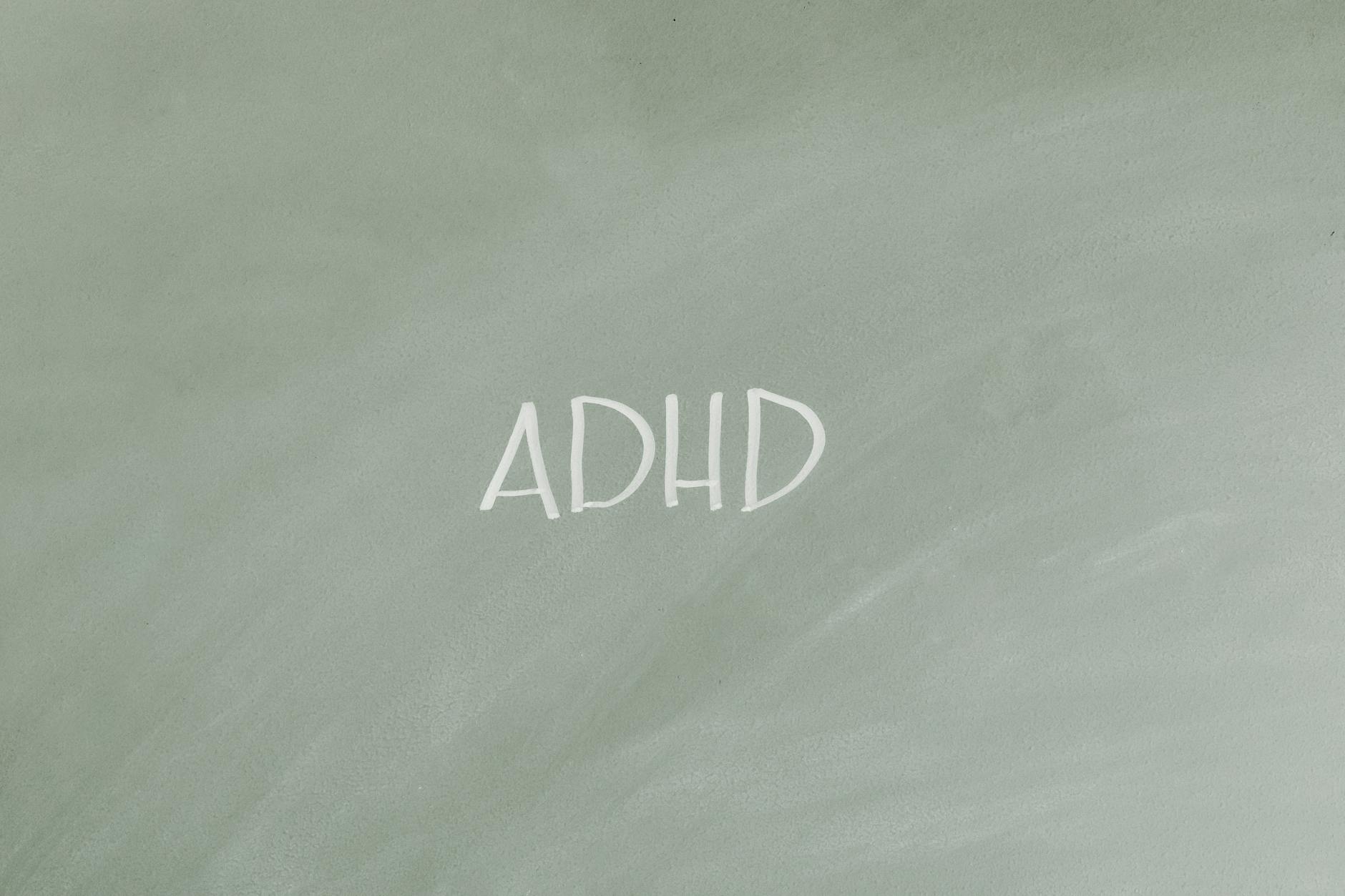Beyond the Questionnaire: Unlocking the Silent Signals of Depression in Thailand’s Elderly Through Smart Technology
New research suggests wearable devices could revolutionize early detection of geriatric depression, moving beyond traditional screening limitations.
For many of us, the golden years represent a time of earned rest, reflection, and the joy of shared experiences. Yet, for a significant and growing segment of our global population – the elderly – these years can also be shadowed by the pervasive and often debilitating effects of depression. In Thailand, like many nations, the challenge of identifying and addressing geriatric depression is compounded by the very nature of aging itself. Symptoms can be subtle, easily mistaken for natural declines, and the reliance on self-reporting through questionnaires can introduce inaccuracies due to memory lapses or a reluctance to admit to mental health struggles. This critical gap in early detection is precisely what a groundbreaking study, published in PLOS ONE, sought to bridge.
The research, spearheaded by a team of dedicated Thai scientists, offers a compelling glimpse into a future where technology, specifically the data passively collected by smart devices, could become a powerful ally in the fight against geriatric depression. By meticulously analyzing physical activity and sleep patterns of elderly participants, the study aimed to validate the efficacy of these passive sensing parameters as a reliable tool for identifying individuals at risk, thereby paving the way for more timely and effective interventions.
This article delves deep into the findings of this vital study, exploring its innovative approach, its significant results, and the broader implications for mental health care in Thailand and beyond. We will examine the challenges inherent in diagnosing geriatric depression, the methodology employed by the researchers, the nuances of their findings regarding physical activity and sleep, and the crucial steps needed to translate this promising research into tangible benefits for our aging population.
Context & Background
Geriatric depression is a complex and often underestimated public health concern. Unlike depression in younger populations, which may manifest with more overt emotional distress, the symptoms in older adults can be more somatic, such as fatigue, loss of appetite, or physical aches and pains. This can lead to misdiagnosis, with these symptoms attributed to the natural aging process or unrelated physical ailments. Furthermore, the reliance on traditional screening tools, such as the Patient Health Questionnaire (PHQ-9), while valuable, is not without its limitations.
One of the primary challenges is “recall bias.” Elderly individuals may have difficulty accurately remembering their mood states or behaviors over a specific period, especially if their cognitive functions have slightly declined. This can lead to an inaccurate assessment of their depressive symptoms. Additionally, there’s the issue of “overlapping symptoms.” Many of the physical and cognitive changes associated with aging – such as reduced energy, sleep disturbances, and social withdrawal – can mirror or mask the symptoms of depression. This makes it incredibly challenging for healthcare professionals to differentiate between normal aging and a treatable mental health condition.
The Thai healthcare system, like many globally, faces resource constraints and a growing demand for services. Early detection is paramount in managing chronic conditions, and this principle applies equally, if not more so, to mental health. If geriatric depression can be identified in its nascent stages, interventions can be implemented promptly, potentially preventing the escalation of symptoms, improving quality of life, and reducing the burden on individuals, families, and the healthcare system as a whole.
This is where the concept of “passive sensing” emerges as a revolutionary approach. Instead of relying solely on what individuals report about themselves, passive sensing leverages data automatically collected by wearable devices, such as smartwatches and fitness trackers. These devices can continuously monitor objective metrics like physical activity levels (e.g., step count, intensity of movement) and sleep patterns (e.g., time spent asleep, awakenings during the night). The hypothesis is that subtle, yet consistent, changes in these objective behaviors could serve as early indicators of underlying depressive symptoms, even before the individual consciously recognizes or reports them.
The study by Kosiyaporn and colleagues sought to investigate this very hypothesis within the specific cultural and demographic context of Thailand. By targeting elderly individuals, the research aimed to determine if the data generated by these ubiquitous smart devices could provide a more accurate and less biased insight into their mental well-being, offering a much-needed complement to traditional screening methods.
In-Depth Analysis
The prospective cohort study conducted from July to September 2023 was designed with precision to address the research question. One hundred and seventy-seven elderly individuals, aged 60 years and older, were purposefully selected from various districts across Thailand’s five regions. The selection criteria were crucial: participants were required to be socially active and, importantly, free from pre-existing diagnoses of cognitive impairment and mental health disorders. This ensured that the study was focusing on identifying new or emerging depressive symptoms in a generally healthy elderly population, rather than exacerbating existing conditions.
The cornerstone of the data collection was the use of the Actigraph wGT3X-BT, a sophisticated wearable device capable of capturing detailed information on physical activity and sleep characteristics. Participants were instructed to wear this device continuously, allowing for the collection of objective, real-world behavioral data. Simultaneously, to establish a baseline and track changes, the Patient Health Questionnaire (PHQ-9) was administered every two weeks. The PHQ-9, a nine-item self-report questionnaire, is a widely recognized tool for screening the severity of depressive symptoms.
The researchers then employed robust statistical methods, including univariate and multivariate regression analyses, to examine the associations between the passive sensing parameters and the PHQ-9 scores. This analytical approach allowed them to not only identify potential links but also to control for confounding factors, thereby strengthening the validity of their findings.
Physical Activity and Depressive Symptoms: A Tangible Link
The study’s results revealed a significant association between physical activity parameters and depression scores. This finding is particularly encouraging, as physical activity is a modifiable behavior that can be influenced by interventions. The data indicated that for every one-unit increase in “Vector Magnitude in Counts per Minute” (VM CPM) and “step count,” the PHQ-9 score would statistically decrease. Specifically, a unit increase in VM CPM was associated with a 0.001 reduction in PHQ-9 score, while a unit increase in step count was linked to a 0.00007 to 0.00008 reduction in PHQ-9 score over the two-week periods.
What does this translate to in practical terms? It suggests that even modest increases in daily physical movement, as measured by the Actigraph, could be a protective factor against the development or worsening of depressive symptoms in this population. The VM CPM provides a measure of overall body movement, capturing the intensity and frequency of activity, while step count offers a more direct measure of ambulation. The consistent, albeit small, negative correlation between these metrics and PHQ-9 scores underscores the fundamental importance of staying active for mental well-being in the elderly.
These findings align with a substantial body of research that has consistently demonstrated the antidepressant effects of physical activity. However, this study adds a novel dimension by showcasing how this association can be objectively quantified through passive sensing, even in a Thai elderly cohort.
Sleep Patterns: A More Nuanced Relationship
The analysis of sleep characteristics presented a more complex picture. Among all the sleep variables examined, only “Wakefulness After Sleep Onset” (WASO) – the total time spent awake after initially falling asleep – showed an association with PHQ-9 scores in the univariate analysis. This indicates that individuals who experienced more fragmented sleep, characterized by prolonged awakenings during the night, tended to have higher depression scores.
However, this association did not hold up in the subsequent multivariate analysis. After adjusting for baseline PHQ-9 scores and other potential confounding factors, WASO no longer demonstrated a statistically significant relationship with depression. This suggests that while sleep disturbances are often a hallmark of depression, in this particular study, the direct link between WASO and depression scores might be influenced by other variables. It could be that the underlying cause of both the sleep disturbance and the depressive symptoms is a third, unmeasured factor, or that the impact of WASO on depression is less direct than that of physical activity.
It’s important to note that the study focused on specific sleep parameters. Other aspects of sleep, such as sleep duration, sleep efficiency, or the timing of sleep, were not explicitly detailed in the summary as showing significant associations. This leaves room for further investigation into how different facets of sleep architecture might relate to mental health in this population.
Demographic Factors: Geography and Age Matter
Beyond the sensor data, the study also identified some interesting demographic associations. Participants who lived outside the bustling metropolis of Bangkok were more likely to have lower PHQ-9 scores. This could be attributed to a variety of factors, such as a potentially less stressful environment, greater social cohesion in rural communities, or differences in lifestyle and access to healthcare services. Conversely, being younger among the elderly cohort (closer to the age of 60 than, say, 80) was also associated with lower PHQ-9 scores.
This finding regarding age is also noteworthy. While it might seem counterintuitive that younger elderly individuals are less likely to be depressed, it could reflect the fact that older age groups may have accumulated more life stressors, experienced greater loss, or have more pronounced age-related health issues that can contribute to depression. However, it’s also possible that the “younger” elderly participants are still more socially engaged and active, benefiting from the positive associations already discussed.
These demographic insights, while not directly related to the sensor data, provide valuable context for understanding the landscape of geriatric depression in Thailand and highlight the need for targeted interventions that consider regional and age-specific factors.
Pros and Cons
The study by Kosiyaporn and colleagues presents a compelling vision for the future of mental health monitoring, but like any research, it has its strengths and limitations. Understanding these nuances is crucial for interpreting the findings and guiding future endeavors.
Pros:
- Innovative Approach: The study boldly ventures into the realm of passive sensing for mental health, offering a novel and potentially more objective method for detecting geriatric depression, moving beyond the inherent biases of self-reporting.
- Objective Data Collection: The use of Actigraph devices provides concrete, measurable data on physical activity and sleep, reducing reliance on subjective recall and enhancing the reliability of the findings.
- Focus on a Vulnerable Population: By targeting the elderly in Thailand, the research addresses a critical and often underserved demographic, aiming to improve the quality of life for a significant segment of the population.
- Rigorous Methodology: The prospective cohort design and the use of both univariate and multivariate regression analyses lend credibility and statistical rigor to the associations identified.
- Actionable Insights: The clear link between physical activity and reduced depressive symptoms provides a tangible, modifiable target for public health initiatives and individual lifestyle changes.
- Cultural Relevance: The study is situated within the specific context of Thailand, making its findings directly applicable to the local population and culture, and providing a template for similar research in other Asian countries.
Cons:
- Sample Size and Generalizability: While 177 participants is a respectable number for this type of study, the findings may not be fully generalizable to all elderly populations in Thailand, especially those with different socio-economic backgrounds or geographical locations not covered by the sampling.
- Limited Sleep Variable Associations: The fact that only WASO showed an initial association with depression, and this did not persist after adjustments, indicates that the role of sleep in this context may be more complex and requires further exploration with a broader range of sleep metrics.
- Correlation vs. Causation: While the study identifies associations, it is important to remember that correlation does not imply causation. The observed relationships might be influenced by unmeasured variables or bidirectional effects.
- Algorithm Development Needed: The study highlights the *potential* of passive sensing but explicitly states that more evidence is needed to ensure accuracy and develop appropriate algorithms for predicting depression.
- Technology Adoption Barriers: For passive sensing to be widely adopted, barriers such as the cost of devices, digital literacy among the elderly, and concerns about data privacy will need to be addressed.
- Definition of “Socially Active”: The inclusion criterion of being “socially active” is somewhat subjective and could influence the overall sample characteristics and results.
Key Takeaways
The findings from this crucial study offer several impactful insights:
- Physical Activity is a Powerful Predictor: Increased physical activity, measured by Vector Magnitude (VM) and step count, is significantly associated with lower depressive symptom scores in Thai elderly individuals.
- Objective Data Holds Promise: Passive sensing data from wearable devices has the potential to serve as an objective tool for identifying individuals at risk of geriatric depression, complementing traditional questionnaires.
- Sleep’s Role Requires Deeper Investigation: While fragmented sleep (WASO) showed an initial link, its association with depression needs further exploration with more comprehensive sleep data and analyses.
- Demographics Matter: Living outside Bangkok and being younger within the elderly cohort were associated with lower depression scores, suggesting the need for context-specific interventions.
- Technology Offers New Avenues: There is a clear potential for applying passive sensing data from smart devices to address mental health issues in Thailand, supporting public health policy.
- Further Research is Essential: More evidence is required to refine sensor accuracy and develop predictive algorithms for depression before widespread clinical implementation.
Future Outlook
The implications of this study extend far beyond its immediate findings, charting a course for the future of mental health care for the elderly. The successful demonstration of an association between objective physical activity data and reduced depressive symptoms opens a significant door for proactive health management. Imagine a future where wearable devices, seamlessly integrated into daily life, provide continuous, unobtrusive monitoring of an elder’s well-being. Early warning signs, such as a consistent decline in daily steps or a marked increase in nighttime awakenings, could be flagged to healthcare providers or designated caregivers.
This could revolutionize how geriatric depression is managed. Instead of waiting for a person to report feeling depressed, which might happen only when symptoms are already severe, healthcare systems could intervene much earlier. This early intervention could involve personalized counseling, adjustments to medication if necessary, or more importantly, recommendations for increasing physical activity or improving sleep hygiene. The demographic findings also suggest that public health campaigns promoting physical activity in rural areas and tailored support for the oldest segments of the elderly population could be particularly beneficial.
The study’s call for more evidence to ensure sensor accuracy and develop appropriate algorithms is a critical next step. Future research should focus on larger, more diverse cohorts, incorporating a wider array of sensor-derived data, including more detailed sleep metrics (e.g., REM sleep, deep sleep), heart rate variability, and even social interaction patterns if feasible and ethical. Machine learning algorithms could be trained on these extensive datasets to build sophisticated predictive models that can identify individuals at high risk with greater precision.
Furthermore, exploring the integration of this passive sensing data into existing healthcare infrastructure is paramount. This could involve secure data-sharing platforms, user-friendly dashboards for clinicians, and patient-facing applications that provide personalized feedback and recommendations. The ethical considerations surrounding data privacy, security, and consent will need to be meticulously addressed to ensure trust and widespread adoption.
The potential for passive sensing to support public health policy is also immense. Data aggregated from a large population of elderly individuals could provide invaluable insights into community-level mental health trends, the effectiveness of public health interventions, and areas where resources are most critically needed. This could inform policy decisions, from funding for community exercise programs to the development of accessible mental health services.
Ultimately, the future painted by this research is one where technology acts as a vigilant, yet gentle, guardian of mental well-being for our aging population, enabling a more proactive, personalized, and effective approach to combating geriatric depression.
Call to Action
The findings of this study are more than just academic; they represent a tangible opportunity to improve the lives of countless elderly individuals in Thailand and, by extension, around the world. To translate this promising research into meaningful change, a multi-faceted approach is required:
For Healthcare Professionals and Policymakers:
- Invest in Further Research: Prioritize funding for studies that aim to refine sensor accuracy, validate predictive algorithms, and explore the ethical implications of using passive sensing data for mental health monitoring.
- Explore Pilot Programs: Consider initiating pilot programs within geriatric care settings to test the feasibility and efficacy of integrating wearable device data into routine health assessments.
- Promote Physical Activity: Reinforce and expand public health initiatives that encourage physical activity among the elderly, leveraging the clear evidence of its protective effects against depression. Tailor programs to specific demographic groups identified in the study.
- Foster Interdisciplinary Collaboration: Encourage collaboration between mental health professionals, geriatricians, data scientists, and technology developers to create comprehensive solutions.
For Technology Developers:
- Develop User-Friendly Interfaces: Design wearable devices and accompanying applications that are intuitive and easy for elderly individuals to use, with clear instructions and accessible interfaces.
- Prioritize Data Security and Privacy: Implement robust data protection measures and ensure transparent communication with users about how their data is collected, stored, and used.
- Focus on Actionable Insights: Develop algorithms that not only detect potential issues but also provide actionable insights and personalized recommendations for users and their caregivers.
For the Public and Caregivers:
- Encourage Active Lifestyles: Support elderly loved ones in maintaining regular physical activity. Even short walks and gentle exercises can make a significant difference.
- Be Observant of Behavioral Changes: While technology can assist, remain attentive to subtle changes in an elderly person’s behavior, mood, sleep patterns, or activity levels, as these could be early indicators.
- Educate Yourself: Learn about geriatric depression and the potential of new technologies to aid in its detection and management.
- Advocate for Accessible Technology: Support initiatives that make wearable technology and digital health solutions accessible and affordable for all elderly individuals.
The journey from promising research to widespread implementation is often long, but by taking these collective steps, we can harness the power of technology and scientific understanding to build a future where geriatric depression is detected earlier, managed more effectively, and ultimately, where our elderly population can thrive with greater mental and emotional well-being.









